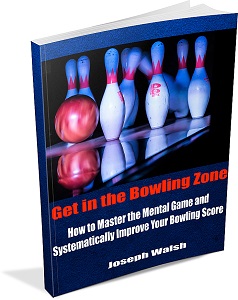
You might not always think that bowling is a sport that requires warming up, but doing certain exercises before you throw a ball is important to avoid pulling a muscle or getting an injury to the lower back.
And a warm-up is even more important for senior bowlers, who don’t have all of the athleticism they once did but for whom bowling carries numerous benefits for staying fit, coordinated and social. It’s a low intensity activity that still provides a great workout.
For seniors, engaging in light activity before bowling to help stimulate blood flow to key muscles is especially crucial to ensure a successful and healthy outing.
Important: Always be sure to consult your doctor before beginning or continuing to bowl to make sure you are fit and healthy enough for the activity.
Good warm up exercises for senior bowlers
Muscles you want to work the most include the arms, shoulders, hips, wrists, and legs.
A few specific stretches that work well include the overhead shoulder stretch, side and forward lunges, wrist extension, the side to side neck stretch.
In addition to static (standing still) stretches, it’s a good idea to mix in some dynamic stretching, which means you are actively moving your body like arm circles or leg pendulums. If you’re not familiar with any of these stretches, there are some great videos on YouTube that walk you through them in detail.
(Again: be sure to ask your doctor if any particular stretches would be best for you or if any should be avoided.)
With each stretch, you should try to hold it for around 20 seconds, and be sure to work both sides, not just the side of your bowling hand.
Also, somewhat counter-intuitively, some of the most important stretching time comes on the days you aren’t actually bowling. Try to stretch for at least 20 minutes each day in between bowling nights so your muscles will stay loose and recover.
Other Senior Bowling Tips
In addition to the above recommendations on stretching, senior bowlers should keep in mind a few other important points.
For one, make sure you’re using the right ball. This might require going down in weight a pound or two if your previous weight is no longer comfortable. You also may need to get your ball redrilled to allow you to grip it properly.
There are also a couple of technical points that can help seniors. If your range of motion is decreased, give special attention to your follow through to ensure it is full. You may need to adjust your footwork as well if your ball speed isn’t what it once was. And finally, look into whether some supports would help you avoid discomfort. Wrist and knee braces are most common.
We hope this article has given some tips for bowling successfully well into your “golden” years! If you have any other recommendations or ideas, let us know in the comments below.
Image courtesy of Flickr


Leave a Reply